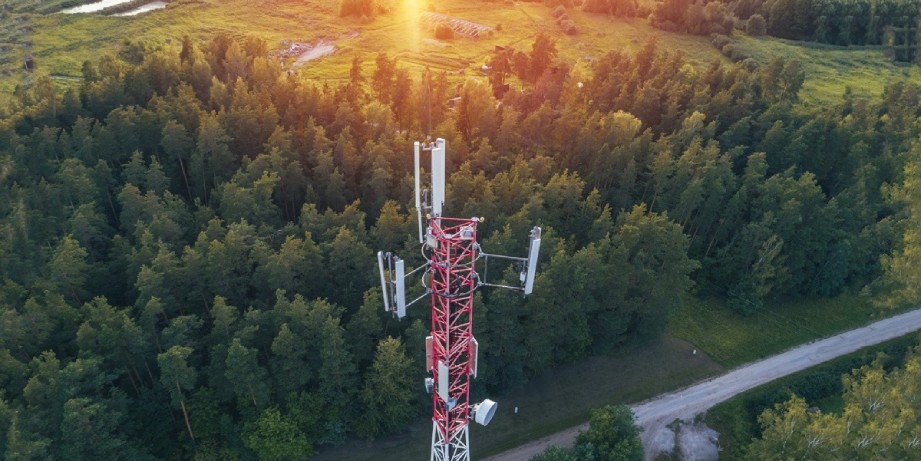Stay Connected: How OEMs Can Rise Above the 3G Sunset

With the sunset of AT&T’s 3G wireless network only eighteen months away, OEMs and their customers are left with a pressing problem: What’s going to happen to our connected cars?
By February 2022, AT&T’s 3G wireless network will see its end of life in the United States. Dubbed “The 3G Sunset”, this shutdown marks the end of the first chapter in the rapidly evolving story of connected cars. While this is certainly the most prominent shutdown, 3G networks around the globe, and the customers relying on their connectivity, are facing the same eventual outcome.
There are currently around 60 million connected cars in the US and this number is expected to reach 146 million by 2030. While we don’t know the exact figure of affected customers, the end to the 3G network will cause millions of vehicles—many MY2016 or newer—to lose their connected features. Some of these capabilities are critical emergency services like crash detection and eCall, which were promised to customers at the point of purchase. Less critical, but just as frustrating, will be the loss of helpful security and convenience features that customers have come to depend on via the associated mobile apps. This problem is fast approaching with an impact that will be felt for years.
When the connectivity ends and the data stops flowing, so does any prospect for future car data monetization. Without a proactive response, OEMs are putting their brand’s reputation on the line, not to mention walking away from their slice of the $750B car data monetization pie.
This transition from 3G network technology is a defining moment for automakers, offering a clear opportunity to showcase agility and commitment to customers. OEMs need a cost-effective fix that delivers on the growing expectations of today’s connected drivers and sets the stage for the next generation of connected vehicle services.
By partnering with fast-moving automotive tech companies, OEMs can bring state-of-the-art connected car services to their affected pool of vehicles, without the burden of a multi-year design and production cycle. But by sitting idle, they risk losing the market to the growing group of tech-forward manufacturers.
The Customer Impact of the 3G Sunset
In the last decade, the rise of connected cars has catapulted new technology, data, and insights into the automotive world, unleashing a wave of changing expectations from drivers.
- ‘Nice-to-haves’ are now ‘must-haves’. Hyundai’s memorable “First Date” ad from the 2016 Superbowl best exemplifies the messaging shift in OEM advertising campaigns. No longer are 5-star safety ratings, fuel economy comparisons, and best-in-class warranty statements enough. Now smartphone-based projection systems like Apple’s CarPlay, connected car apps, and Wi-Fi Hotspots have come to dominate consumers’ reasons to buy.
- App-cessibility. Connected cars have brought peace-of-mind to anxious parents of teen drivers, delivered seamless responses to highway breakdowns and life-endangering crashes, and empowered everyday people with previously unavailable insights about what’s happening under their hood. This real-time access to vehicle data via mobile apps has changed the expectations of what it means to own a car.
A recent consumer survey by one of Mojio’s customers highlighted the top 5 most desirable connected car features:
- App-based roadside assistance
- Crash detection and emergency eCall services
- Predictive maintenance alerts
- Exclusive discounts on vehicle-related services
- Vehicle telematics, diagnostic codes, and alerts
It’s increasingly clear that consumers aren’t ready to let go of their connected cars. Without a satisfactory replacement, the sudden loss of connected services won’t just frustrate people, it will have a long-standing impact on brand perceptions and loyalty. Companies like Tesla have already gained an aggressive chunk of consumer mindshare when it comes to automotive tech and, if unchallenged, will continue to lead the industry.
What Does This Mean for OEMs?
When AT&T discontinued its 2G network in 2017, many customers and devices were left behind. The San Francisco Municipal Transportation Agency (SFTMA), for example, saw 70% of their trains and buses disappear from the NextMuni system app and faced weeks of pressure from the public as they struggled to upgrade their systems. This network shutdown is already affecting a wide range of companies that operate within the Internet of Things (IoT), including automotive OEMs.
When the 3G phase-out begins, OEMs will have to straddle the delicate line of near-term costs and long-term customer retention to avoid a similar catastrophe. Most, if not all, of the affected embedded telematics devices are not capable of an over-the-air (OTA) update to modify the cellular modem or network configuration. Replacing a professionally installed telematics control unit comes with significant costs, such as hardware, logistics, dealer installation labor, and more. A full-scale recall and replacement program for the pool of affected vehicles will be inordinately expensive and complex.
What’s needed is a turnkey, end-to-end solution that delivers on consumer expectations while providing OEMs with a scalable, pay-per-vehicle business model.
OBD-II Retrofit to Fill the Gap
OBD-II devices are plug-and-play, increasingly inexpensive, and can be directly shipped to customers with a simple, self-installation process—download the app, plug in the device, and go for a drive. However, the device is just one piece of the puzzle. A robust end-to-end retrofit solution should tackle the 3G shutdown (and any aftermarket program for that matter) and contain these four seamlessly integrated components:
- 4G LTE-enabled OBD-II device as the hardware and source of connectivity.
- A cloud platform that is secure and scalable. The platform needs to deliver on today’s security and privacy expectations while providing high-performance telematics throughput with at least 99.9% reliability and remaining flexible for future enhancements.
- A white-label mobile app that has highly reviewed user experiences with sought-after features, integrated services, and a roadmap to support the future of connected vehicle services.
- Big data insights. An Intelligence Toolkit capable of analyzing and transforming massive pools of data into actionable insights, such as analyzing driver safety, predicting parts failures, feeding data into smart city programs, and more.
The goal to connect cars and customers across the globe—and keep them connected—starts here. OEMs of all sizes have a unique chance to bring a large-scale, connected vehicle program to the market that is not only profitable but has a real impact on brand loyalty.
But, this technological leap can’t be done in isolation.
OEMs need to choose the way that they approach the future of connected mobility. Do they continue with the manufacturer’s mindset to always ‘build it’, or will some adopt a ‘win with partners’ approach that accelerates their brand into the future?
The Future of the Connected Car Starts Now
When we look at today’s fleet of connected cars, the vast majority are years behind the most current tech. With traditional design cycles stretching as long as five years from concept to roll-out, it’s no surprise that dealer lots still feature vehicles that come with 3G connectivity.
For OEMs, the chance to become automotive technology leaders starts with a proactive approach to addressing the customers affected by the impending 3G Sunset. Furthermore, OEMs that deploy a retrofit service will open up immediate opportunities for data monetization that will help pave the way for the future of their connected car business strategy.
By providing these customers with adaptable services that improve safety, comfort, and offer peace-of-mind, OEMs can retain (and improve) customer loyalty. Additionally, they can preempt customers from seeking alternative solutions for themselves. For example, T-Mobile SyncUP DRIVE (powered by Mojio) carries a 4.8-star rating in the Apple App Store, works on almost any make or model, and costs just $10 a month. That’s an attractive proposition to a customer who has just been informed that the connected car features will soon be shut down.
Through strategic tech partnerships, OEMs can forge a more agile automotive industry that prioritizes customers while improving profitability. This win-win approach allows the customer-facing brand to focus on reaching, engaging, and converting the customer while empowering companies like Mojio to focus on what we do best.
Mojio offers a clear solution to the 3G shutdown problem, and more broadly across the entire fleet of unconnected models. Our ability to deliver secure, scalable, and highly-reviewed connected car services in a turnkey and cost-effective package positions us as a unique partner for this opportunity.
The time for innovation is now, and Mojio is ready to help OEMs and their customers rise above the 3G sunset.
Contact Mojio to discuss your 3G sunset strategies and programs.

